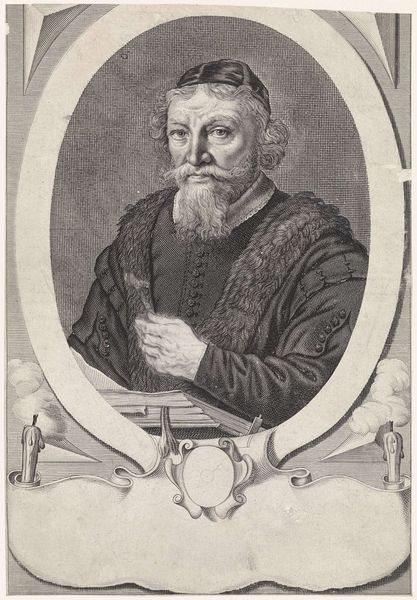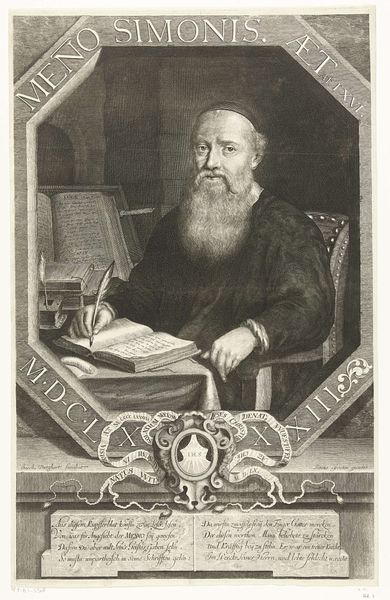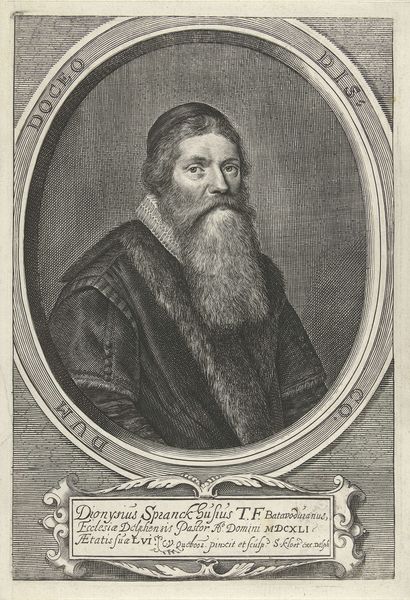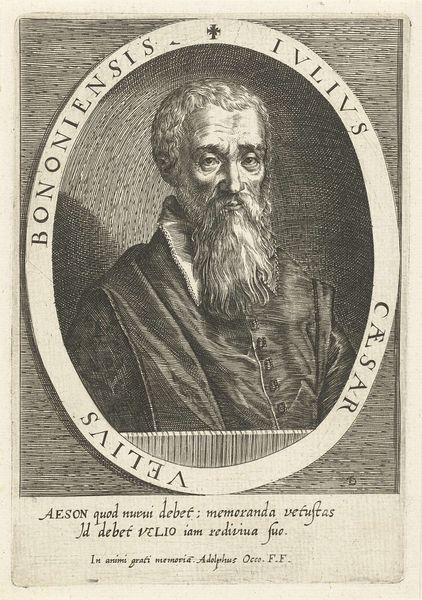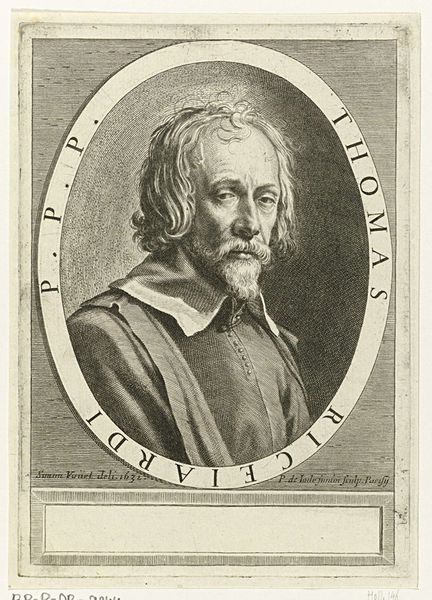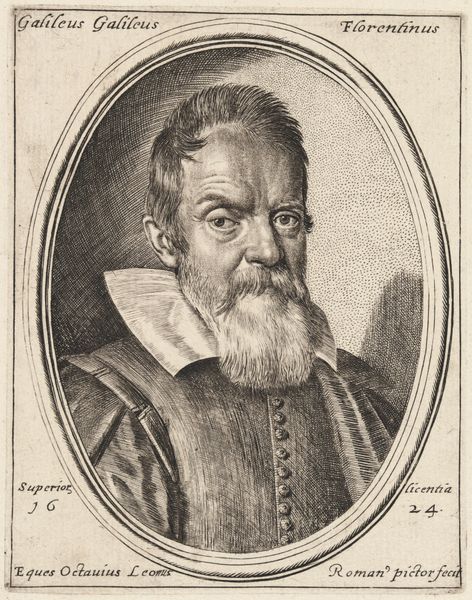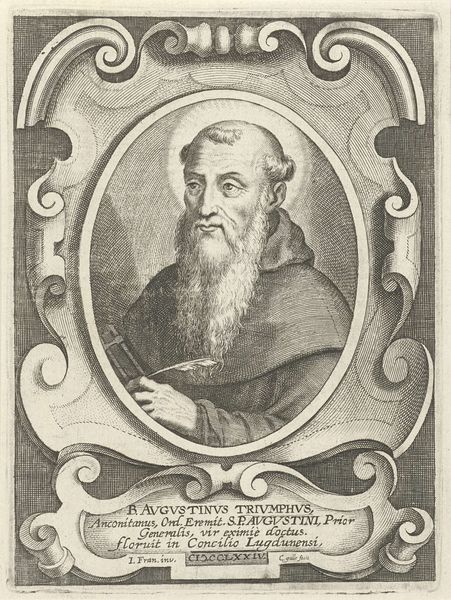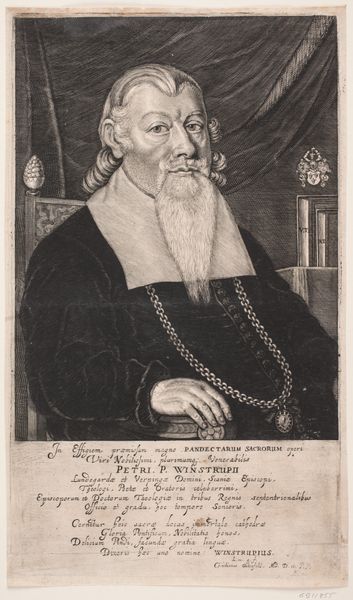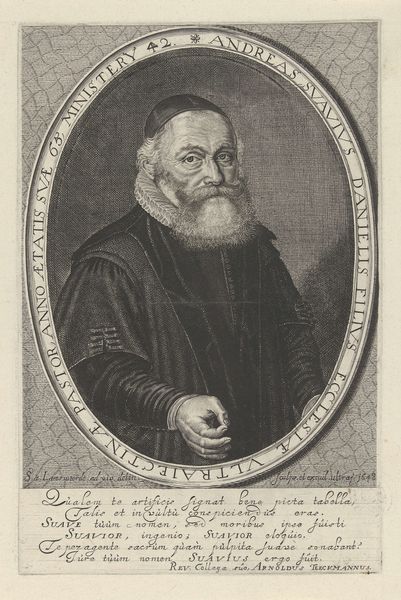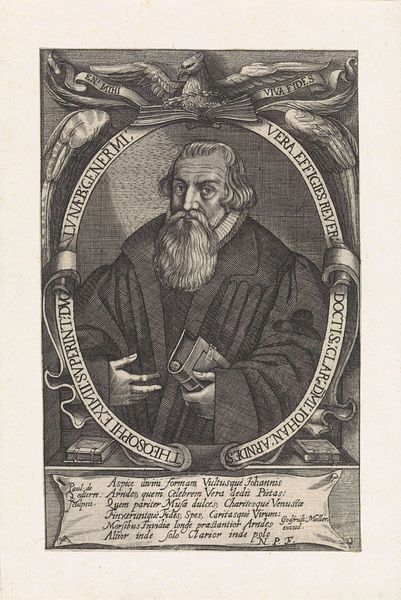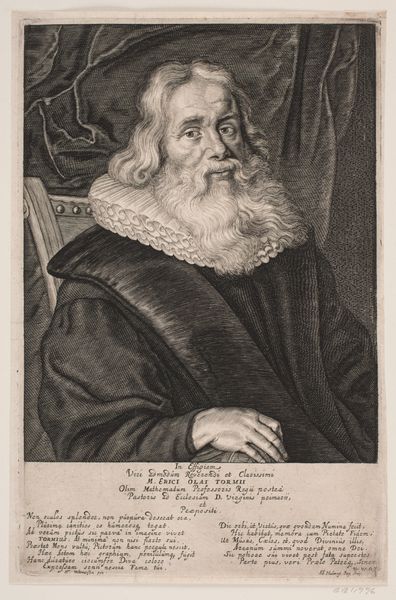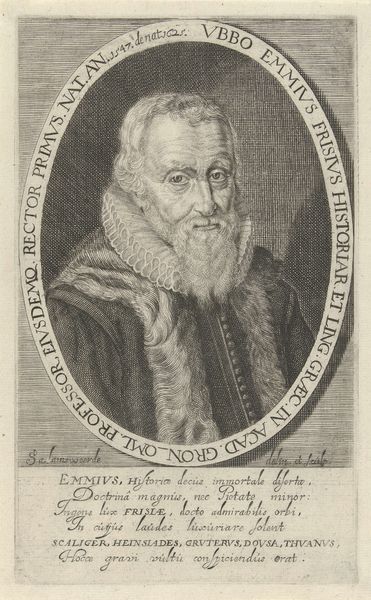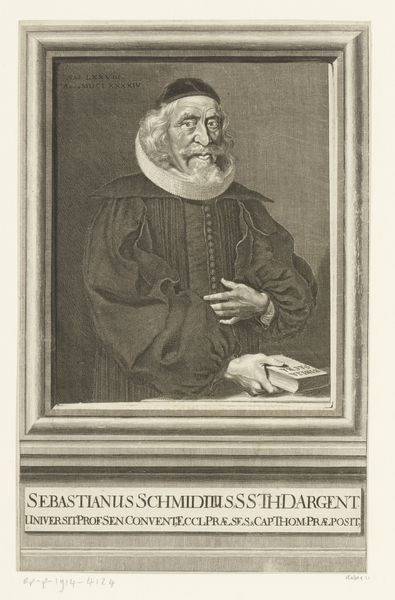
drawing, print, paper, engraving
#
portrait
#
drawing
#
baroque
# print
#
paper
#
engraving
Dimensions: 462 × 332 mm (image); 468 × 334 mm (plate/sheet)
Copyright: Public Domain
Theodor Matham created this engraving of Stephanus Crachtius in 1653. Immediately, we notice the composition is structured around an oval frame, densely inscribed, that contains the portrait. This creates a sense of enclosure, drawing focus to Crachtius’s figure, but also suggests that the composition is constrained by semiotic codes. Matham meticulously uses line and texture to define form, capturing the detailed wrinkles of Crachtius’s face and the soft fur of his robe. This attention to detail invites us to consider the interplay between representation and symbolic meaning. Consider how the texture creates a binary between the softness of the robe and the hardness of the inscriptions. The symmetrical placement of objects like the chalice and book flanking Crachtius suggests balance and order. Yet, this symmetry might also hint at the structured roles and expectations placed on individuals within the social and religious frameworks of the time. The artwork is not just a portrait but an intricate construction of identity and social positioning, encoded through visual signs. It functions aesthetically and as a cultural and philosophical discourse.
Comments
No comments
Be the first to comment and join the conversation on the ultimate creative platform.

